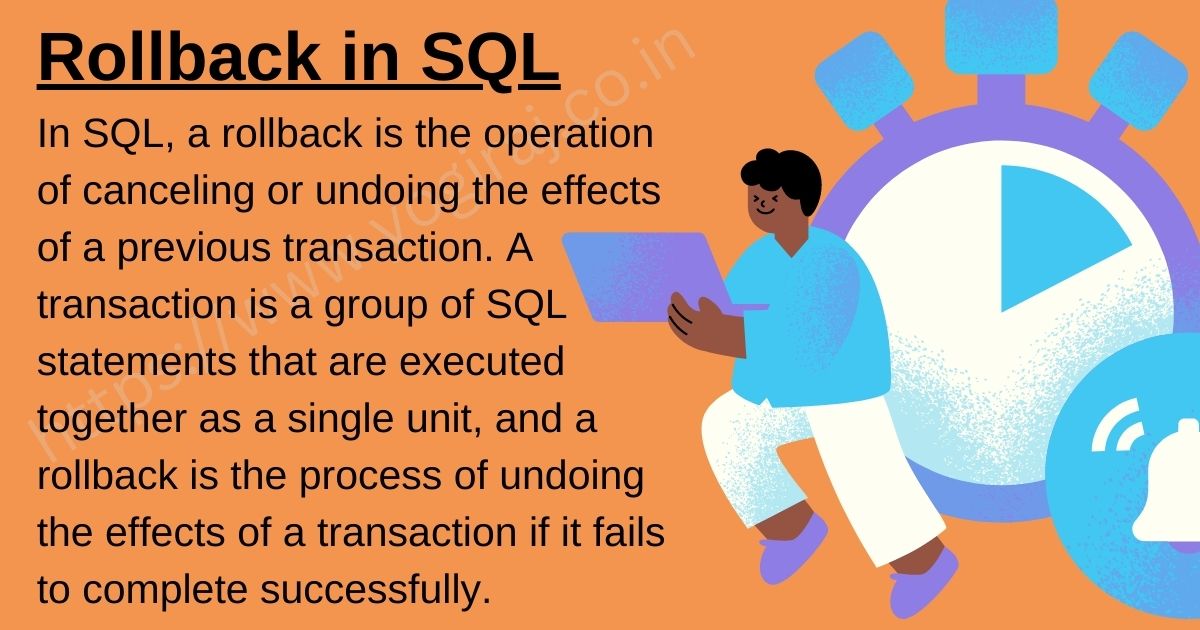What is rollback in Sql
by Yogi P - January 17, 2023
Rollback in SQL
In SQL, a rollback is the operation of canceling or undoing the effects of a previous transaction. A transaction is a group of SQL statements that are executed together as a single unit, and a rollback is the process of undoing the effects of a transaction if it fails to complete successfully.
Rollback is an important feature of SQL because it allows you to ensure the integrity of your data by undoing any changes made by a failed transaction. When a transaction fails, the rollback operation will undo any changes made by the transaction, restoring the database to its previous state.
To use rollback in SQL, you must first start a transaction using the BEGIN TRANSACTION statement. This statement marks the beginning of a transaction, and all subsequent SQL statements will be executed as part of the transaction.
Once the transaction is started, you can execute any number of SQL statements as part of the transaction. If any of these statements fail to complete successfully, you can use the ROLLBACK statement to undo the effects of the entire transaction.
For example, the following code shows a simple transaction that inserts a new record into a table, and then uses rollback to undo the insertion if the transaction fails:
BEGIN TRANSACTION;INSERT INTO students (name, grade) VALUES ('Alice', 'A');IF @@ERROR <> 0BEGINROLLBACK;PRINT'The transaction failed and was rolled back.';ENDELSEBEGINCOMMIT;PRINT'The transaction succeeded and was committed.';ENDIn this example, the BEGIN TRANSACTION statement marks the beginning of the transaction, and the INSERT statement inserts a new record into the “students” table. If the INSERT statement fails to complete successfully (for example, if the table does not exist or the values are invalid), the IF @@ERROR <> 0 block will be executed and the ROLLBACK statement will undo the effects of the entire transaction.
In summary, rollback is an important feature of SQL that allows you to undo the effects of a transaction if it fails to complete successfully. This feature ensures the integrity of your data by allowing you to restore the database to its previous state in the event of a failed transaction.












